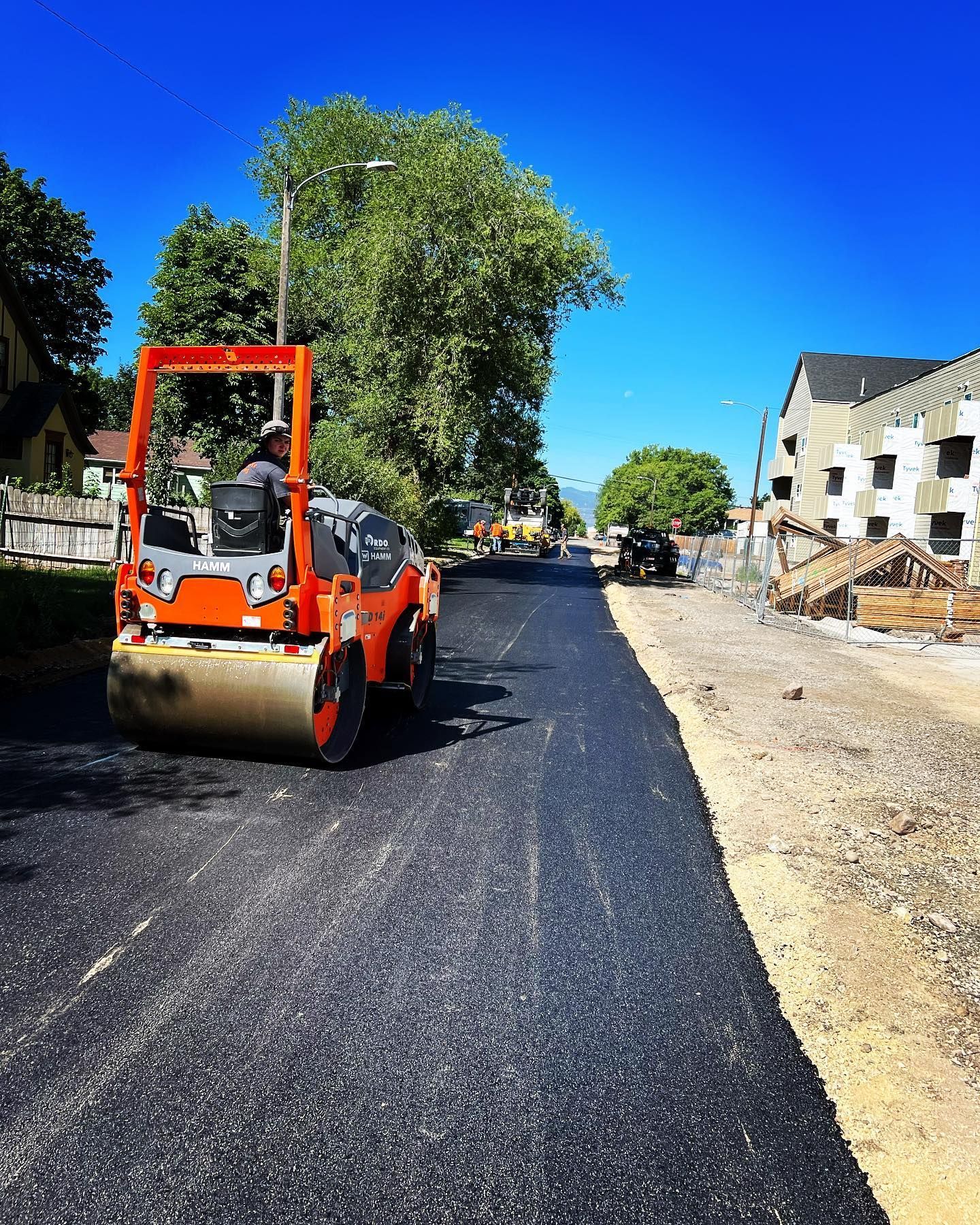Asphalt Paving
Asphalt Paving by NAFlintstone Paving, Inc. in Missoula County, Montana
Flintstone Paving, Inc.
is a woman-owned enterprise and a Disadvantaged Business Enterprise (DBE) renowned for exceptional asphalt paving services in Missoula County, Montana
With three decades of experience, our company has established a solid reputation for top-tier workmanship and unwavering commitment to quality.

Slide title
Write your caption hereButton
Understanding Asphalt Paving
Asphalt paving is a robust solution for highways, driveways, parking lots, and other surfaces demanding durability and resilience.
- Flintstone Paving, Inc. employs the latest techniques, ensuring the quality and longevity of the paving.
- Our team is adept at the precision and consistent execution of tasks, upholding the highest industry standards.
Customized Solutions for Every Client
We don't believe in a one-size-fits-all approach. We offer:
- Tailored solutions to meet unique requirements.
- High-grade materials to ensure the longevity of the pavement.
- Consistent communication with clients, providing regular updates about the progress of the project.
Efficiency and Environmental Stewardship
Our operations emphasize efficiency, and we consciously make efforts to minimize environmental impact by:
- Reducing waste during the paving process.
- Adhering to sustainable practices.
- Using eco-friendly materials where feasible.
Flintstone Paving, Inc. - Asphalt Paving in Missoula County, Montana
Flintstone Paving, Inc., we've remained a community-oriented business for 30 years, dedicated to providing unparalleled asphalt paving services. As a professional and reliable local small business, our expertise stretches far beyond simply laying asphalt.
Our approach emphasizes communication, customization, efficiency, and sustainability, ensuring every project reflects our commitment to quality. While our proud woman-owned business status and DBE recognition underpin our identity, it's our tangible results and enduring paving installations that affirm our presence in Missoula County, Montana.
With Missoula County, Montana, you receive more than asphalt paving. You acquire a partner invested in your project's success, promising a quality surface designed to stand the test of time.
Send Us A Message
Thank you for contacting us.
We will get back to you as soon as possible
Oops, there was an error sending your message.
Please try again later
Location
Areas We Serve
- Missoula County, MT
- Lake County, MT
- Ravalli, MT
